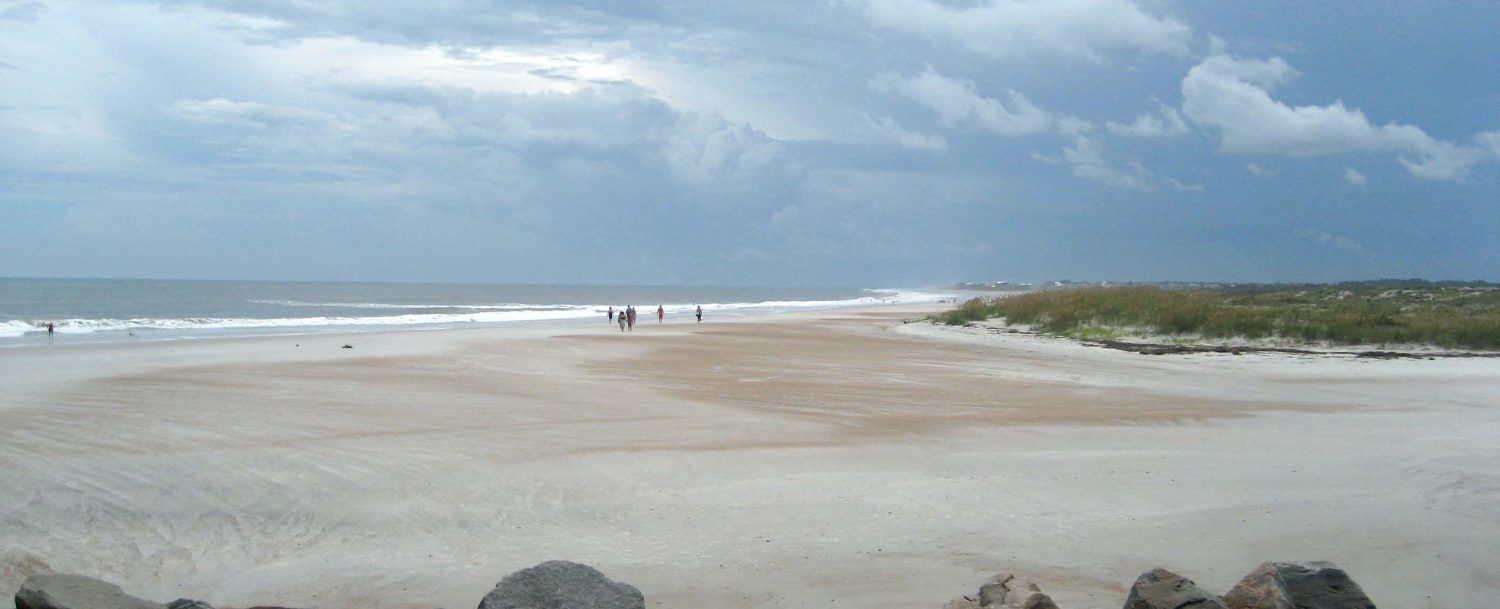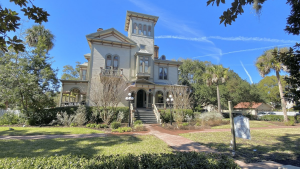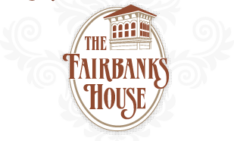
Amelia Island History
Amelia Island’s history has been revealed in archaeological discoveries on the island and its tale is recounted by docents at the Amelia Island Museum of History. Best summed as “the French visited, the Spanish developed, the English named and the Americans tamed,” Amelia has charted the ebb and flow of international politics since the 16th century.
Small Island, Big Player – A Brief Amelia Island History Lesson
The island, located at the northeastern-most tip of the state, has been cast as an English plantation, international port, playground for the elite and the illicit, Civil War fortress, turn-of-the-century tourist mecca, the terminus of Florida’s first cross- state railroad and world headquarters for revolutionary shrimping. Crucial for shipping strongholds and global power plays, Amelia was prized as the deepest natural harbor in the South – Florida’s passageway to prosperity. Amelia Island history has proven to be as exciting as a jaunt down 4th street!
Frozen In Time – Amelia Island’s Well Preserved Historical Downtown
One of America’s premier industrialists, Henry Flagler, provided the most pivotal point in the beguiling history of Amelia Island. His venture into Florida’s Southern frontier unintentionally suspended the island in a Victorian time capsule. Then considered Amelia’s misfortune, it is now known as its fortunate destiny to be an island locked in the charm and enchantment of the Victorian era. Christened for the royal daughter of England’s King George II, Amelia’s captivating beauty, climate and harbor have enticed a collection of characters from aristocrats and bluebloods to bootleggers and buccaneers.
When you visit Amelia Island today, you can walk through the historic downtown with shop faces, streets, and buildings largely unchanged from their prior splendor. Several historical sites around the area are worth visiting such as Fort Clinch St. Park, the lighthouse, and The Palace Saloon.
Isle De Mai
As early as 2,500 B.C. ancient Timucuan Indians praised the attributes of Amelia Island or “Nopoica.” The seeds of the island’s struggle were first planted in 1562 when Frenchman Jean Ribault stepped ashore on “Isle de Mai” (Island of May) and Europe began its coexistence with the Indians. Spanish rule followed with an intent to Christianize the natives of “Santa Maria” until Spain swapped Florida with England for Havana. British loyalists then diligently established plantations for the King and dubbed the island “Amelia.”
Pirates
Amelia, which now has a simple innocence, once simmered with depravity as smugglers and ruffians sought to seize the “prima donna” of Florida land. As the border town between Spanish Florida (regained in another land trade) and American territory, the island’s most colorful period began during Jefferson’s Embargo Act of 1807. With all U.S. ports closed to foreign shipping, the island’s Spanish harbor of Fernandina became the nation’s smuggling center for slaves, liquor and foreign luxuries. What is now known as Old Town attracted racketeers from all over the world. The bluff, now occupied by the mansion used in the movie Pippi Longstocking, was lined with bordellos. Eventually the “festering fleshpot” of Fernandina, survivor of three more flag usurpations, was forced to relinquish its illegal ways when it ceded to the United States in 1821.
David Yulee
The present site of Fernandina Beach originated in the 1850s as visionary U.S, Senator David Yulee promised to make Fernandina Beach the spotlight of the Western world. He convinced the town to resettle a half-mile downriver to accommodate his dream – Florida’s first cross-state railroad. Yulee’s rail journeyed over swamps to connect with Cedar Key on the Gulf Today, an original 1899 railroad depot serves as the Visitor Center on the island.
Fort Clinch
As the new railroad was paving the path for a golden era on Amelia, the Union army took control of a partially- finished fort on the island. The First New York Volunteer Engineers continued laying the brick, but by the war’s end no battles were fought and the massive structure was never completed. Now called Fort Clinch, located within Fort Clinch State Park, the “War of Aggression” is reenacted with uniformed, rifle-toting soldiers throughout the mess hall, infirmary, barracks and brig, the first weekend of each month. Park rangers are dressed in period costume throughout the year and answer questions as if the year was 1864.
Tourists Arrive
By 1875, thousands of Northerners voyaged to Fernandina on the Mallory Steamship Line from New York, creating the dawning of the Golden Age on Amelia. Hailed as “The Queen of Summer Resorts” by an 1896 edition of American Resorts magazine, the island’s breathtaking beaches and climate lured visitors to this new destination – Florida.
Golden Age of Amelia
Golden Age prosperity prompted the building boom of Fernandina Beach, attracting America’s entrepreneurial elite. It’s now preserved as the picturesque Centre Street, home of antique shops, boutiques and some of the area’s finest restaurants. The most colorful watering hole on Centre Street is Florida’s oldest tavern, The Palace Saloon (1878). Former haunt of the Vanderbilts, DuPonts and Carnegies, spirits are still served from its 40-foot mahogany bar graced by hand carved caryatids.
The Silk Stocking District, a collection of grand, sherbet-hued Victorian mansions, arose along the side streets. Today, more than 50 blocks of the downtown with structures styled from Queen Anne and Chinese Chippendale to “Mississippi Steamboat” are listed on the National Register of Historic Places. In the 1890s, Florida entrepreneur Henry Flagler christened a railroad which drew wealthy tourists far south of Amelia Island. As a result, mass modernization bypassed the island, a disguised blessing that allowed Amelia to remain an authentic Victorian seaport village.
Shrimping on Amelia
In the early 20th century, Amelia Island became the birthplace of the modern shrimping industry as innovators replaced row boats and cast nets with power-driven seines and otter trawls. Today laden shrimp trawlers return to the downtown docks with the brilliant sunset as a backdrop.
Nearly 80 percent of Florida’s intake of sweet Atlantic white shrimp is harvested in Amelia’s waters and the Burbank Trawl Makers (locals call it the Net House) is still the world’s largest producer of handmade shrimp nets. You can still tour this net company today, and – every year – you can join the locals the first weekend of May in celebrating our shrimping heritage in the Isle of Eight Flags Shrimp Festival.
10 Historic Attractions on Amelia Island
Our Amelia Island Historic Inn: The Fairbanks House
Built in 1885 as a surprise for his wife, Major George R. Fairbanks House soon became the envy of Fernandina Beach. Constructed in the Italianate style, The Fairbanks House eventually became a bed and breakfast in the early 1900s.
Many of our guests come here because they appreciate the historic nature of our inn – while enjoying all the modern amenities. Owning a historic home often feels like babysitting a petulant child or an energetic puppy. Our innkeepers are more than happy to share more information about the history of our B&B if you ask them!
We are the protectors of a vision born in the 1800s. The architectural details of the house are interesting beyond words. The walls are thick, and the rooms are quiet. Our fireplaces feature tiles depicting both Shakespearean characters and Aesop’s Fables that George Fairbanks personally selected for his grandchildren. The library shelves were made from wood from the Fairbanks family’s orange groves. The hinges on the doors were made in 1885. We even have a tower!
We aim to preserve Major Fairbanks’ original vision for the property while also implementing updates that bring a new generation of Amelia Island visitors.
Reading about history is fun but seeing it firsthand and making new memories is a lot more memorable! The Fairbanks House has its own rich history, which makes it a popular place to stay!
Stay in a beautiful room, suite, or cottage that features historic features original to the home. While the property is historic, the amenities are modern and set the scene for a relaxing getaway. Check our availability and book your dream vacation today.

